Tamron vs Sigma 150-600
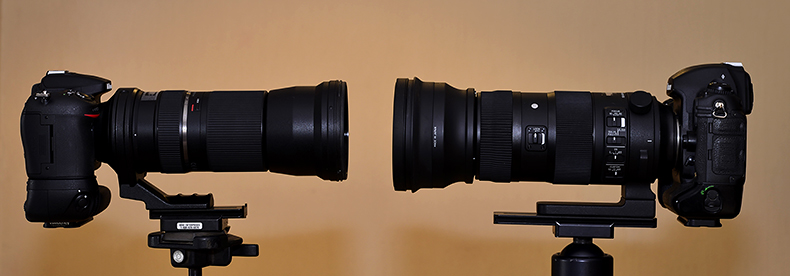
We have done reviews of both the Tamron 150-600 and Sigma 150-600 lenses but realise that many photographers will want to see side-by-side image comparisons hence this Tamron vs Sigma 150-600 page.
(You may also want to see how the Sigma lens compares to expensive professional lenses - if so, check out our page where we compare two award-winning wildlife photographers and their gear).
Many of the existing lens reviews have images of one lens or the other lens and many of the images have been captured under just one lighting condition.
We spent just 6 days in Madikwe Game Reserve where we had sunshine, overcast and rainy conditions so we hope these images provide a more balanced view of what each lens is capable of.
Please keep in mind that each lens is mounted on a different body - the Tamron with a Nikon D800 (and more recently with the Nikon D7100) and the Sigma with a Nikon D3S - and each photographer has a different style of shooting and will use different apertures, ISO and zoom settings but the subjects are identical.
We feel this is a more accurate way to review - under actual safari conditions and personal preferences. We could have done the standard line up of apples on our garden wall and photographed the fruit with the same body at the same apertures but these types of tests have already been done!
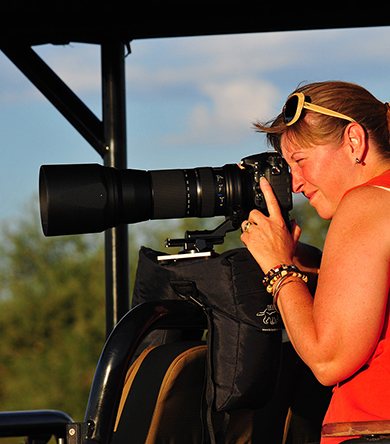 |
 |
Jenny tends to use a bean bag with panning plate while I tend to use the Sigma hand-held. Jenny will either drape the beanbag over the seat in front of her (if no one is sitting there) or on the arm-rest while I will brace myself on the armrest and/or my knee.
Tamron vs Sigma 150-600: Some Background Info
We had our Nikon 80-400mm lenses for just over a year and then they both started having serious issues so we traded them in and bought the Tamron 150-600 for Jenny and the Sigma 150-600 for myself.
We missed the reach of our old lenses (the Nikon 600mm f4 and 300mm f2.8 plus 2x TC) but did not miss the bulk and weight of the lenses. The new Tamron and Sigma lenses seemed like the ideal lenses for our safaris so we took them to Madikwe to try them out.
Madikwe was the ideal testing ground as the Nikon 80-400 lenses performed well in Etosha, the Kgalagadi and the Kruger Park but started playing up while in Madikwe. If these Tamron and Sigma 150-600mm lenses could survive Madikwe then there was a good chance that they could become our preferred safari lenses.
Tamron vs Sigma 150-600: Comparative Images
Overcast:
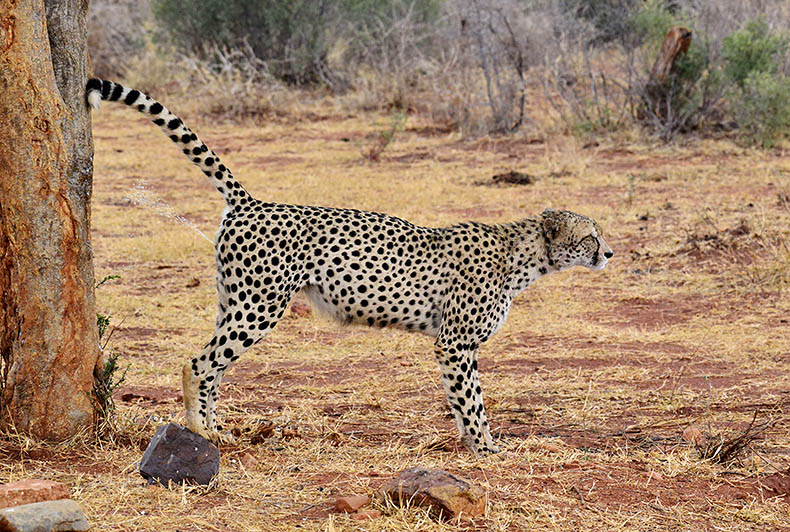
Cheetah Spraying: Nikon D800 with Tamron 150-600mm lens @ 150mm, on beanbag. f/8, ISO 5000, 1/500 sec
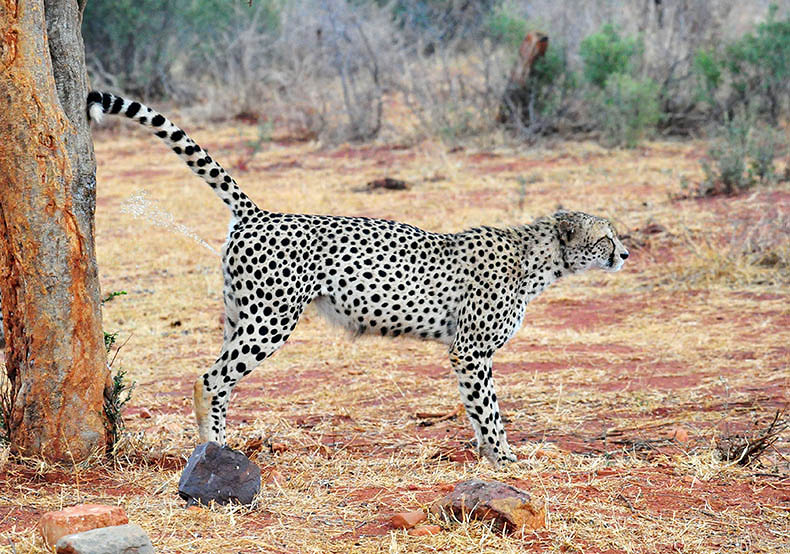
Cheetah Spraying: Nikon D3S with Sigma 150-600mm lens @ 150mm, handheld. f/6.3, ISO 12800, 1/1000 sec
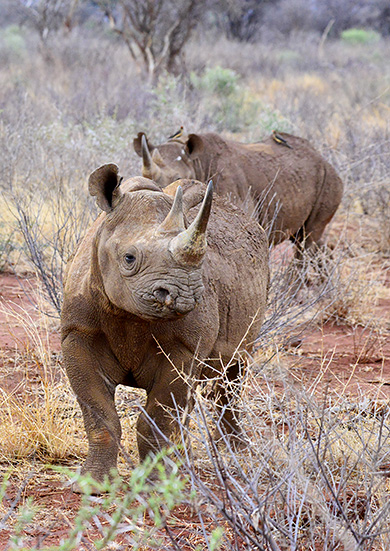 |
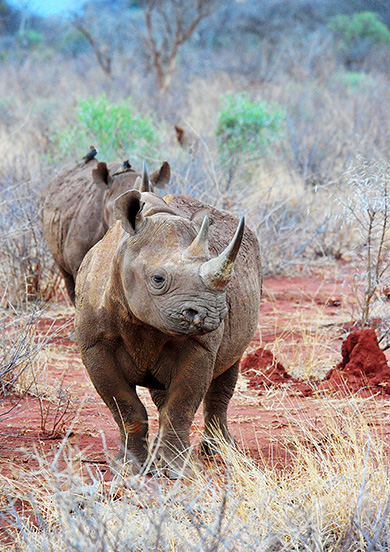 |
|
Black Rhinos: Nikon D800 with Tamron 150-600mm lens @ 150mm, on beanbag. f/8, ISO 5000, 1/400 sec |
Black Rhinos: Nikon D3S with Sigma 150-600mm lens @ 250mm, handheld. f/8, ISO 12800, 1/500 sec |
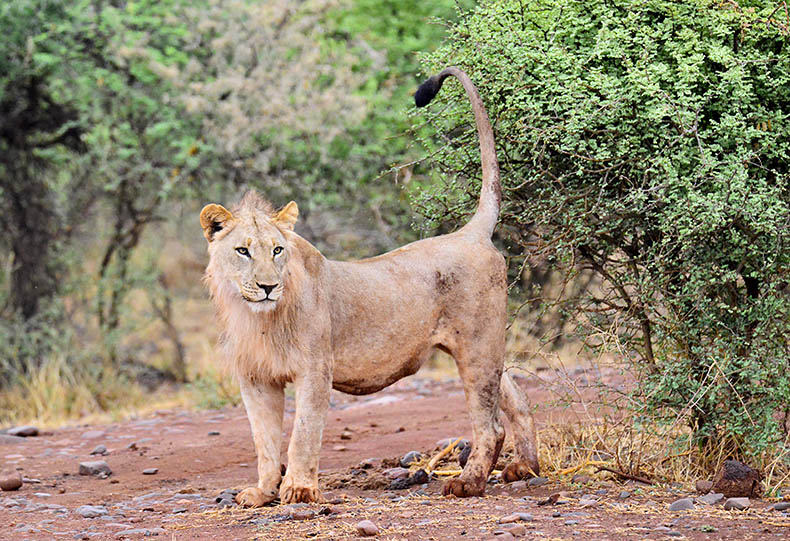
Lion Spraying: Nikon D800 with Tamron 150-600mm lens @ 360mm, on beanbag. f/6, ISO 6400, 1/500 sec
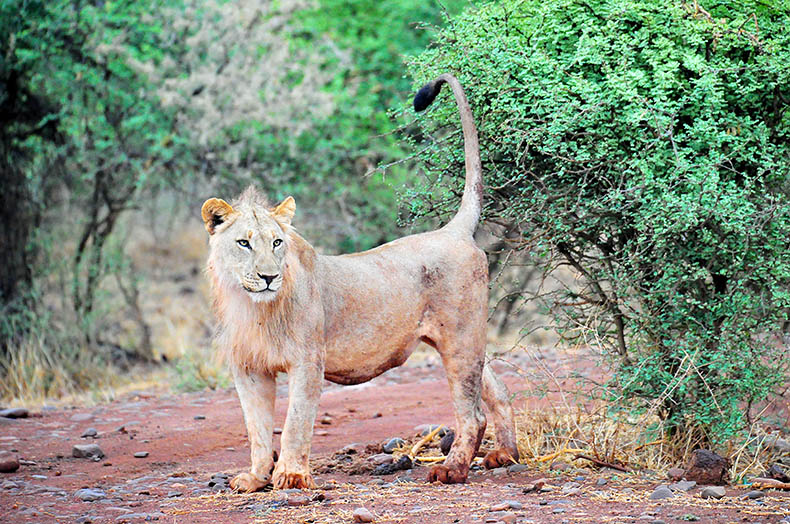
Lion Spraying: Nikon D3S with Sigma 150-600mm lens @ 370mm, handheld. f/6, ISO 6400, 1/640 sec
Low-light (15 minutes after sunset on an overcast day)
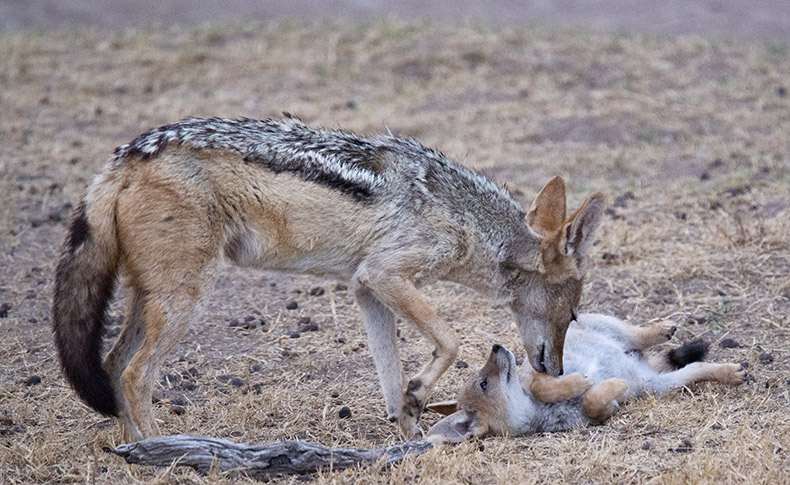
Black-backed Jackal with pup: Nikon D800 with Tamron 150-600mm lens @ 600mm, on beanbag. f/6.3, ISO 6400, 1/60 sec
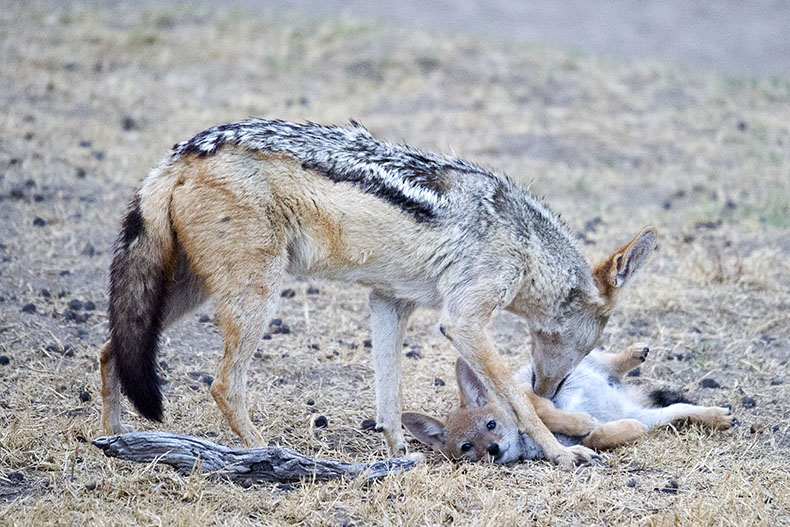
Black-backed Jackal with pup: Nikon D3S with Sigma 150-600mm lens @ 600mm, handheld. f/6.3, ISO 12800, 1/125 sec
Rain:
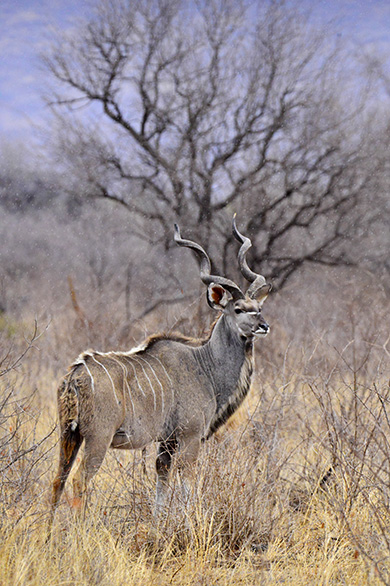 |
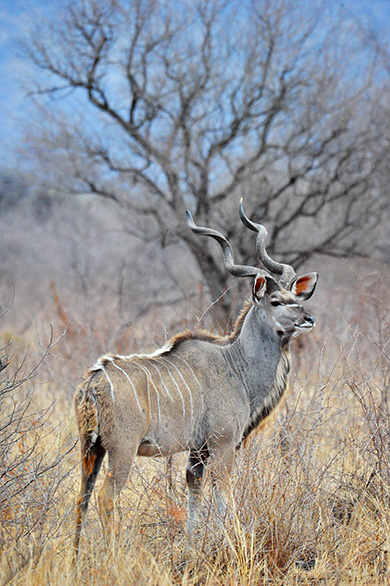 |
|
Male Kudu: Nikon D800 with Tamron 150-600mm lens @ 420mm, on beanbag. f/8, ISO 5000, 1/800 sec |
Male Kudu: Nikon D3S with Sigma 150-600mm lens @ 600mm, handheld. f/8, ISO 6400, 1/400 sec |
Sunshine:
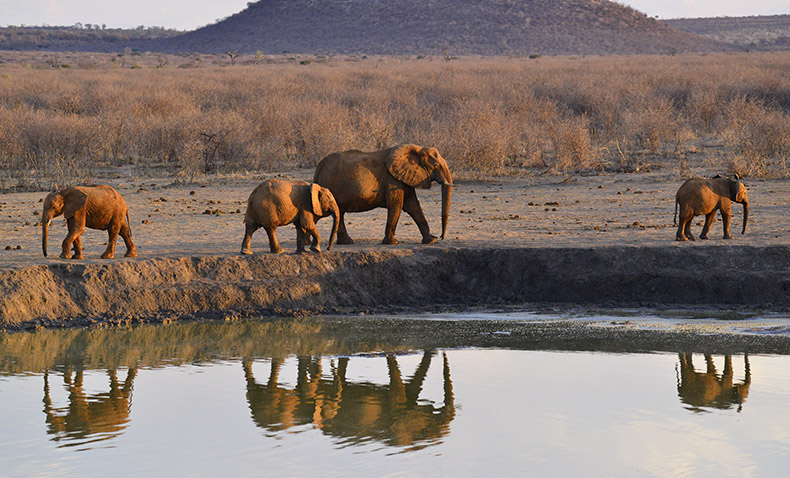
Elephants at Tlou Dam: Nikon D800 with Tamron 150-600mm lens @ 150mm, handheld. f/6.3, ISO 2500, 1/800 sec
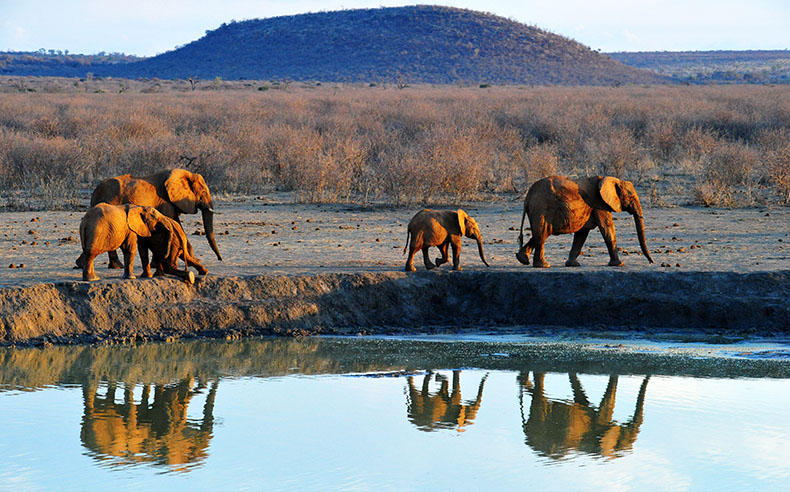
Elephants at Tlou Dam: Nikon D3S with Sigma 150-600mm lens @ 150mm, handheld. f/8, ISO 6400, 1/800 sec
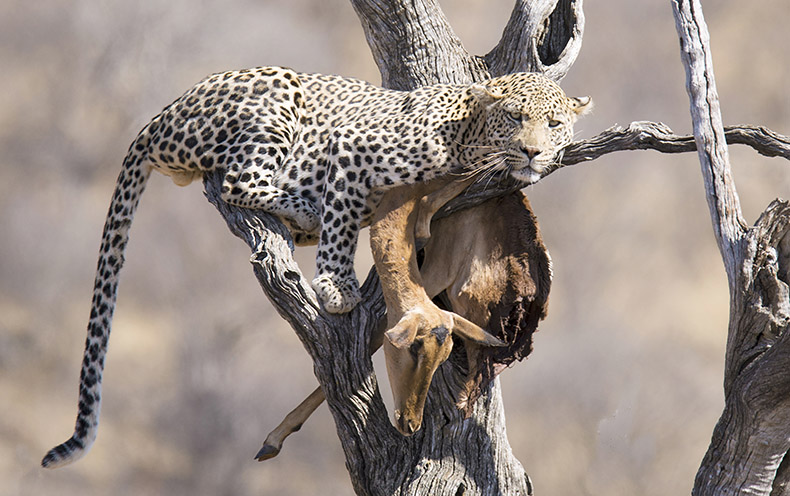
Leopard in Leadwood tree with Impala Kill: Nikon D800 with Tamron 150-600mm lens @ 600mm, on beanbag. f/6.3, ISO 320, 1/500 sec
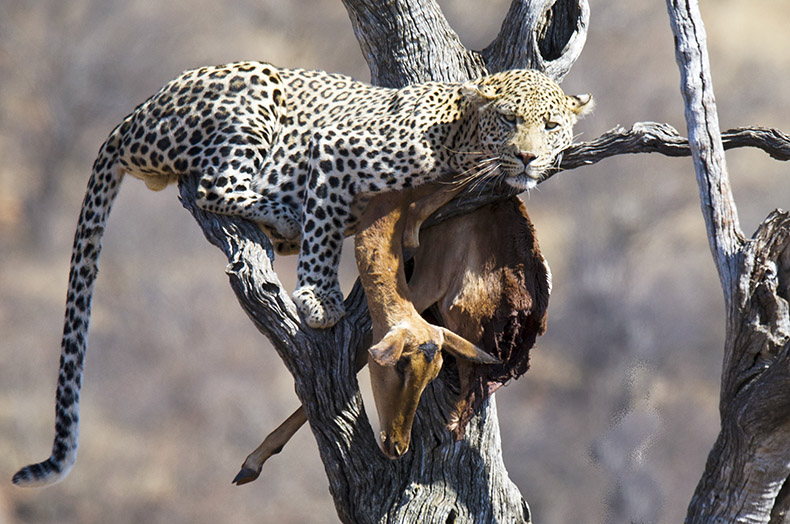
Leopard in Leadwood tree with Impala Kill: Nikon D3S with Sigma 150-600mm lens @ 600mm, on '3 Legged Thing' monopod. f/8, ISO 800, 1/800 sec
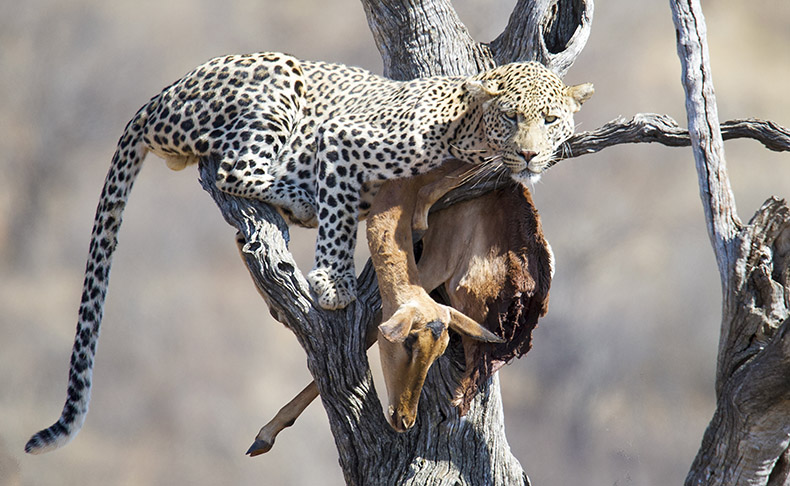
Leopard in Leadwood tree with Impala Kill: Nikon D3S with Sigma 150-600mm lens plus Sigma 1.4x TC @ 840mm, on monopod. f/9, ISO 1600, 1/1000 sec
Tamron vs Sigma Comparison Chart
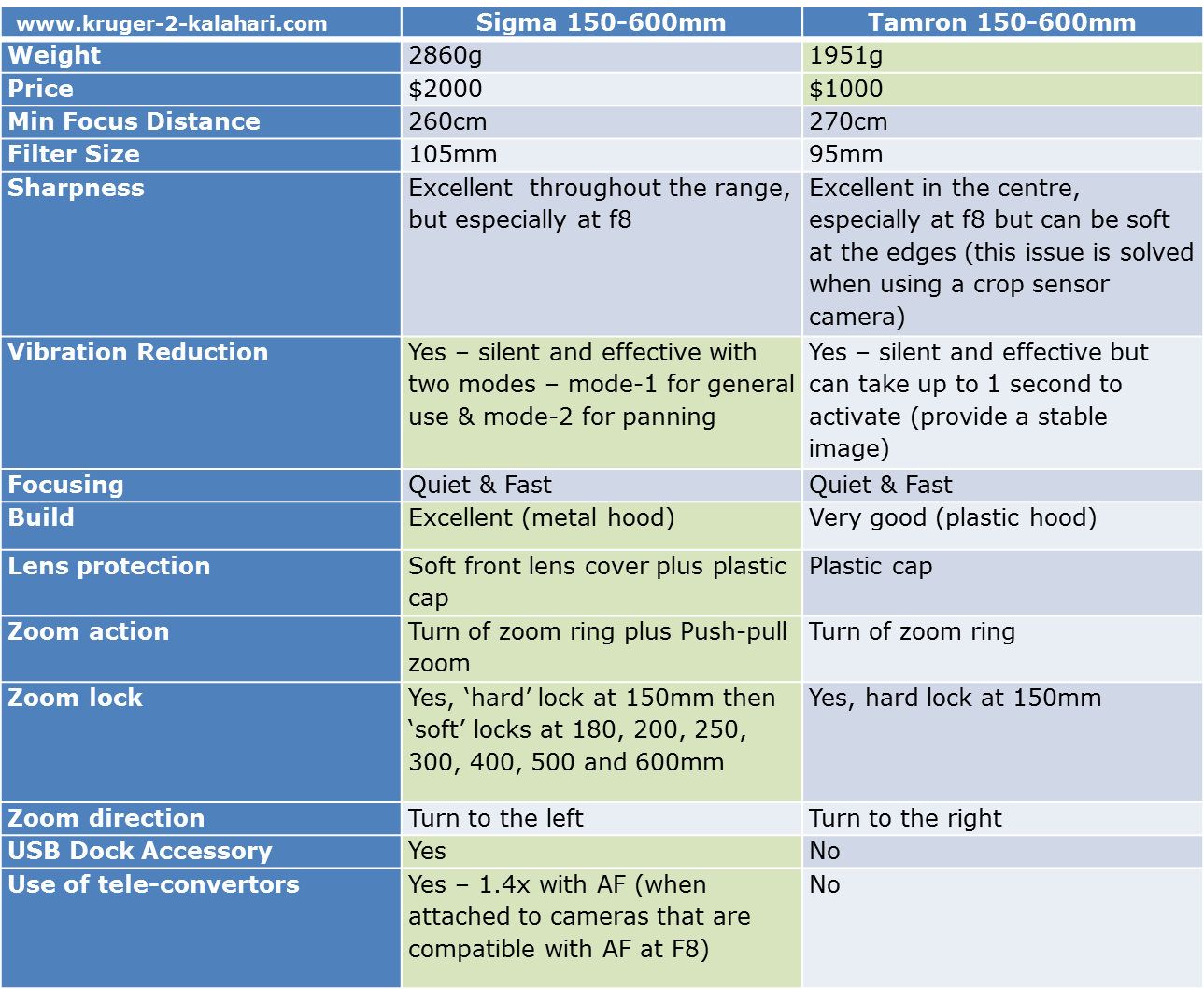
The above chart provides a comparison of the key features and differences of the Tamron vs Sigma 150-600 lenses. If you were wondering why the Sigma costs double, this chart shows all the extra features and accessories that can be used on/with the Sigma lens.
The Tamron lens captures very good photos and it's primary advantages are it's weight and price, which are two important criteria.
You may be wondering why we have added the 'zoom direction'? If so, it's because Canon users are used to zooming to the left while Nikon users will be used to zooming from the right. The Tamron would therefore be easier to use for Nikon users yet I opted to buy the Sigma 150-600 lens.
Yes, the zoom action can be confusing as I sometimes find myself zooming in the wrong direction but I am slowly getting used to it and it's a small price to pay for having all the addition features that the Sigma lens provides.
For Jenny, her main criteria is sharp images and a light lens so the Tamron is ideal, especially when combined with the D7100. We hope this comparison chart and comparative images will enable you to make an informed decision if you are deciding on purchasing one of these great lenses.
Tamron vs Sigma 150-600: Conclusion
So, which lens is better? Both lenses suit us. I love the Sigma 150-600mm Sport lens. It's heavy but still not as heavy and bulky as my old 600mm f4! It is sharp and easy to handle while on game drive vehicles. The OS (Optical Stabilization) works beautifully and the lens produces a nice bokeh. I give the lens 5 stars!
Jenny loves her Tamron 150-600mm lens. It is one kilogram lighter than the Sigma so makes a good walk-around lens and is easy to handhold while walking or on game drive vehicles. The lens is sharp but the Nikon D800 tends to be an unforgiving camera (in terms of poor technique and use of lower quality lenses) and seems better suited to landscapes. As a result, Jenny traded in her D800 and will now be using the Nikon D7100.
The other reasons for changing to the D7100 are that the D7100 should eliminate most vignetting, provide more magnification, a higher frame rate plus images that are sharper overall, as the Tamron produces sharp images in the center of the frame but towards the edge they are a bit soft so the crop factor should eliminate these softer edges.
We will be going back to Madikwe in January so will post more images taken with the Tamron 150-600 and Nikon D7100.
|
Should you wish to get the eBook, click on the book cover above, then click 'Add to Cart' where you'll see a button called 'Add Promo Code'. Click on it then add the word K2K and the 33% discount will be automatically applied. This code is valid until the end of the month, so don't delay! |
"Planning a Kruger trip? A new guide by pro photographers holds the key to good pictures. Learn from the folks who spent 517 days in the park and make your photos sing!" - Romi Boom, Editor of Wildcard Magazine, South Africa 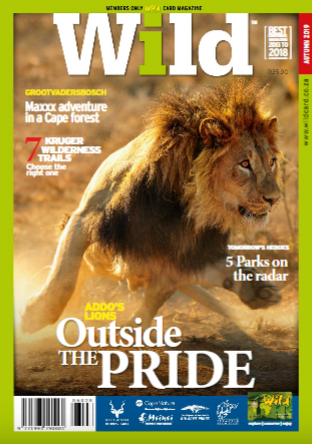 |
2015 UPDATE - January Images
We spent two weeks in Madikwe with Jenny's new Nikon D7100 body and we were able to obtain some comparison images captured under different lighting conditions - you can read our trip report here.
None have been post-processed - they were captured RAW and converted to JPEGs so they are as shot in-camera:
Frontlight:
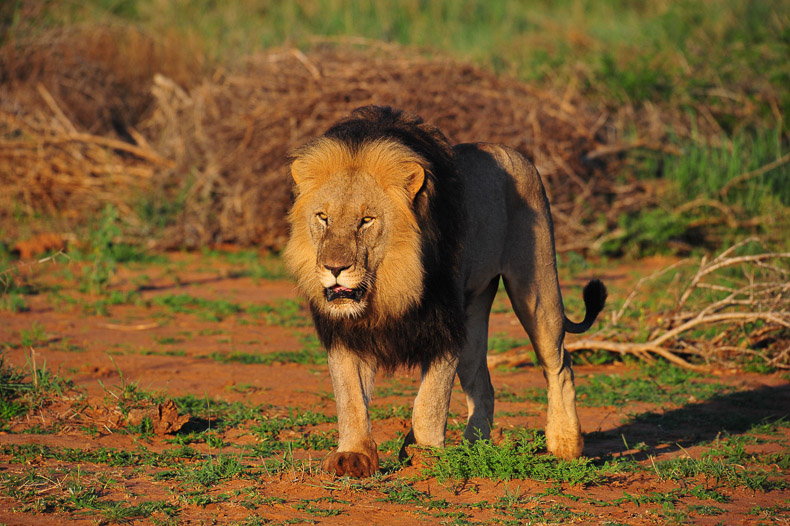 Nikon D3S with Sigma 150-600mm lens @ 440mm, handheld. f/8, ISO 1600, 1/2000 sec, -0.7ev.
Nikon D3S with Sigma 150-600mm lens @ 440mm, handheld. f/8, ISO 1600, 1/2000 sec, -0.7ev.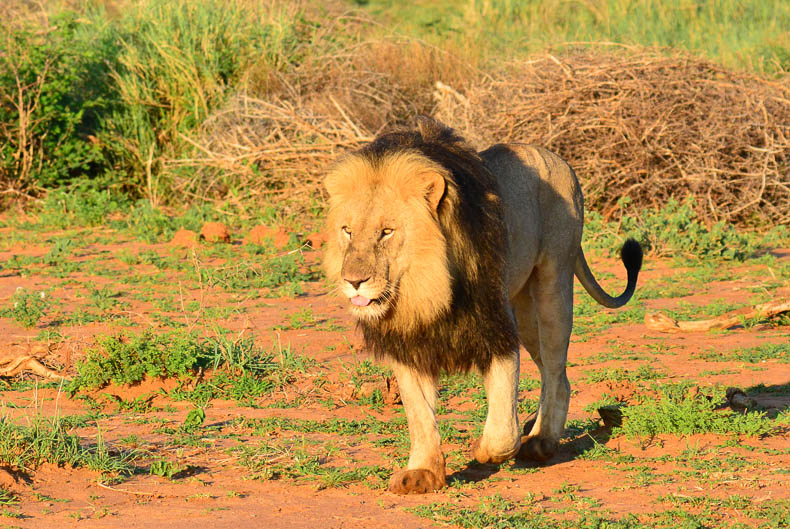 Nikon D7100 with Tamron 150-600mm lens @ 150mm, handheld. f/8, ISO 1100, 1/500 sec
Nikon D7100 with Tamron 150-600mm lens @ 150mm, handheld. f/8, ISO 1100, 1/500 secSidelight:
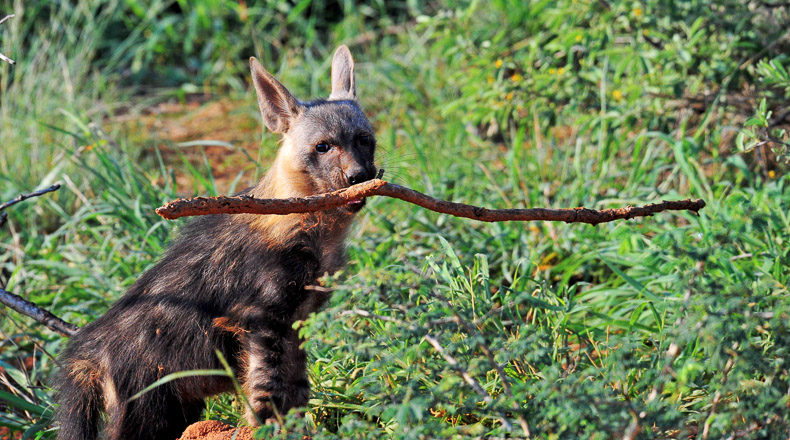 Nikon D3S with Sigma 150-600mm lens @ 340mm, handheld. f/9, ISO 3200, 1/2500 sec, -0.7ev.
Nikon D3S with Sigma 150-600mm lens @ 340mm, handheld. f/9, ISO 3200, 1/2500 sec, -0.7ev.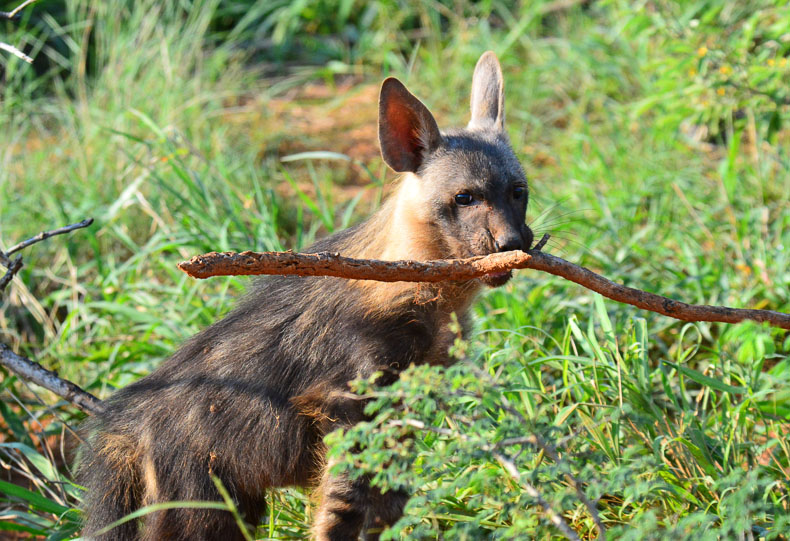 Nikon D7100 with Tamron 150-600mm lens @ 220mm, handheld. f/8, ISO 1600, 1/500 sec
Nikon D7100 with Tamron 150-600mm lens @ 220mm, handheld. f/8, ISO 1600, 1/500 secMidday:
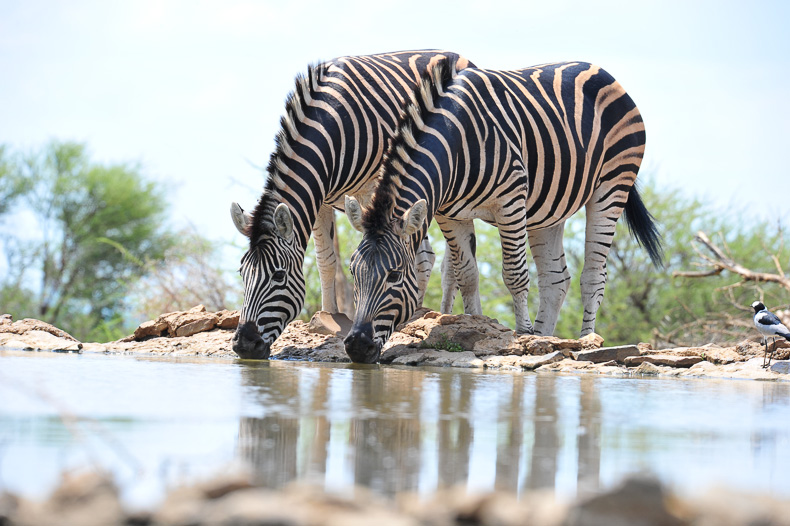 Nikon D3S with Sigma 150-600mm lens @ 330mm, on Panning plate. f/8, ISO 280, 1/250 sec, -0.7ev.
Nikon D3S with Sigma 150-600mm lens @ 330mm, on Panning plate. f/8, ISO 280, 1/250 sec, -0.7ev.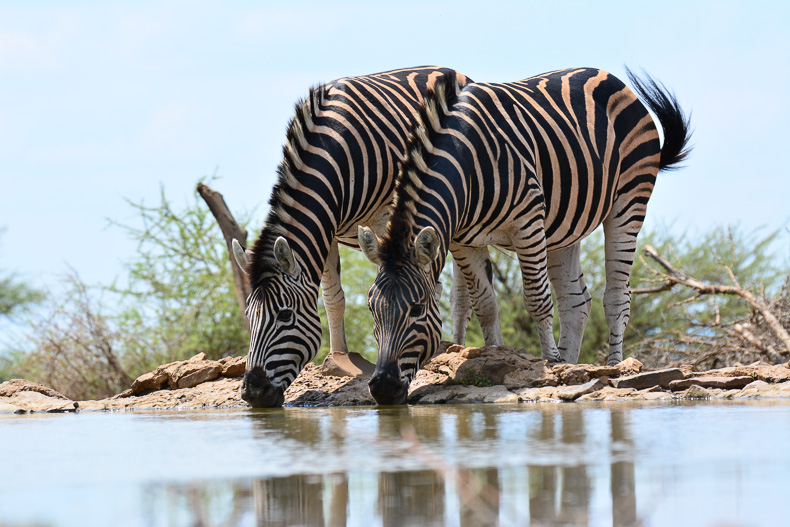 Nikon D7100 with Tamron 150-600mm lens @ 220mm, on Panning-plate. f/8, ISO 400, 1/1000 sec
Nikon D7100 with Tamron 150-600mm lens @ 220mm, on Panning-plate. f/8, ISO 400, 1/1000 secBacklight:
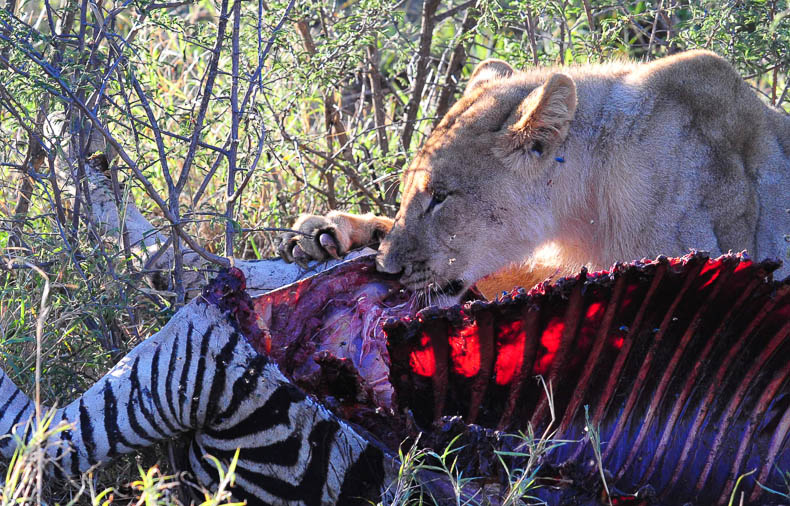 Nikon D3S with Sigma 150-600mm lens @ 150mm, handheld. f/8, ISO 3200, 1/640 sec, -0.7ev (cropped)
Nikon D3S with Sigma 150-600mm lens @ 150mm, handheld. f/8, ISO 3200, 1/640 sec, -0.7ev (cropped)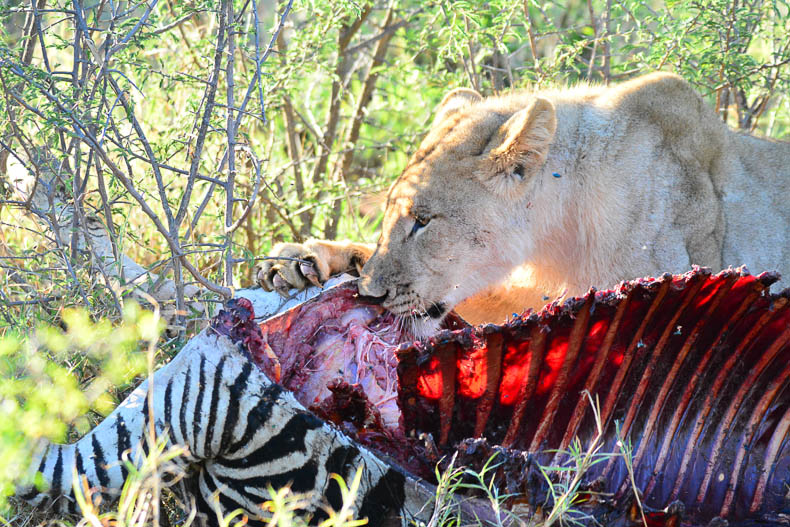 Nikon D7100 with Tamron 150-600mm lens @ 150mm, handheld. f/5.6, ISO 2200, 1/1000 sec
Nikon D7100 with Tamron 150-600mm lens @ 150mm, handheld. f/5.6, ISO 2200, 1/1000 secNo sun:
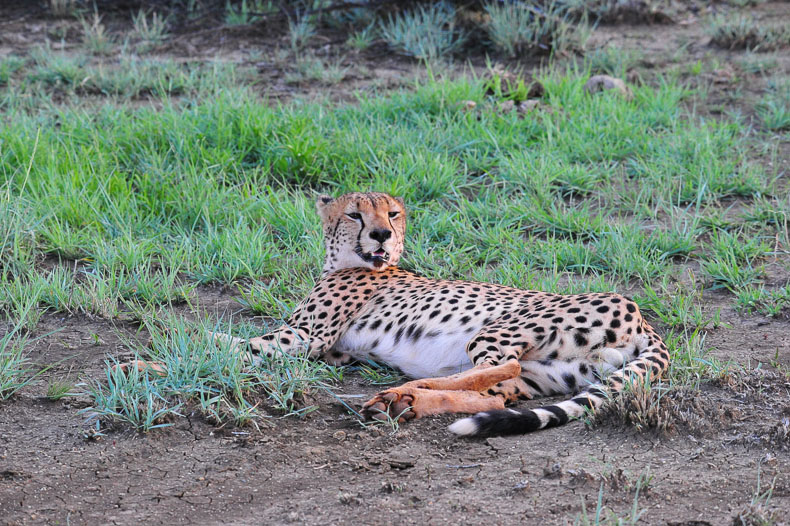 Nikon D3S with Sigma 150-600mm lens @ 150mm, handheld. f/8, ISO 4500, 1/250 sec, -0.7ev.
Nikon D3S with Sigma 150-600mm lens @ 150mm, handheld. f/8, ISO 4500, 1/250 sec, -0.7ev.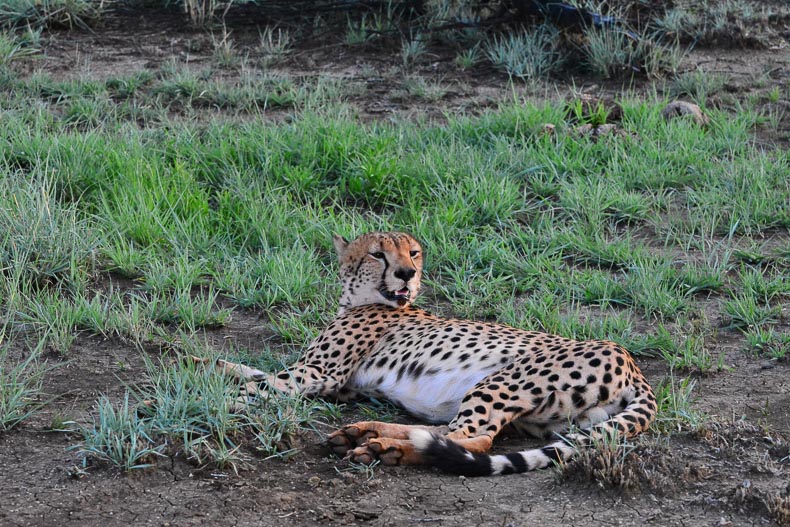 Nikon D7100 with Tamron 150-600mm lens @ 150mm, handheld. f/8, ISO 3200, 1/500 sec
Nikon D7100 with Tamron 150-600mm lens @ 150mm, handheld. f/8, ISO 3200, 1/500 secNocturnal:
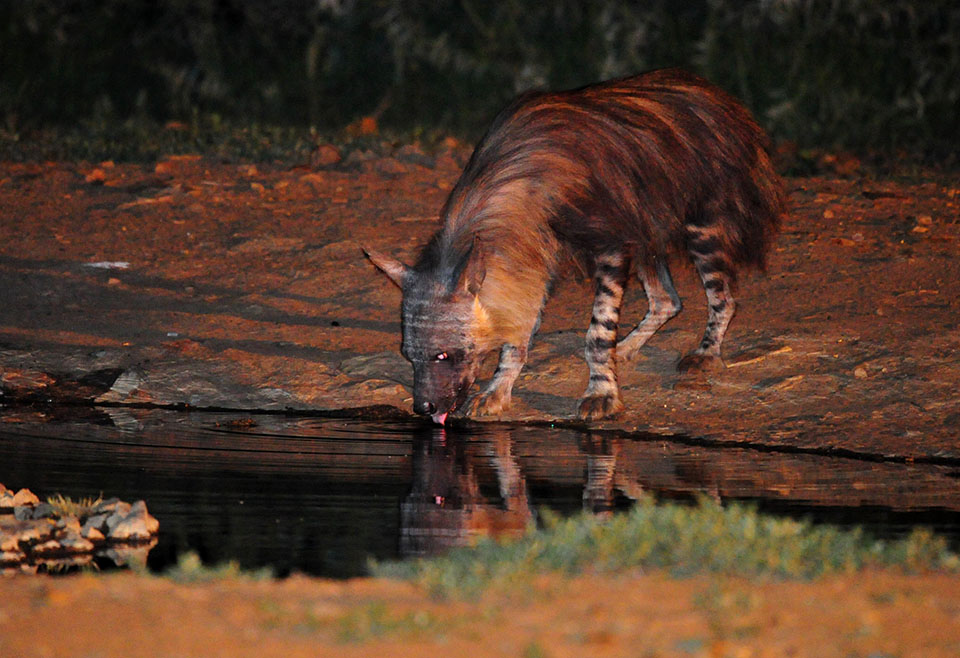 Nikon D3S with Sigma 150-600mm lens @ 600mm, Tripod. f/6.3, ISO 12800, 1/60 sec - Nikon SB900 flash with Better-beamer (cropped)
Nikon D3S with Sigma 150-600mm lens @ 600mm, Tripod. f/6.3, ISO 12800, 1/60 sec - Nikon SB900 flash with Better-beamer (cropped)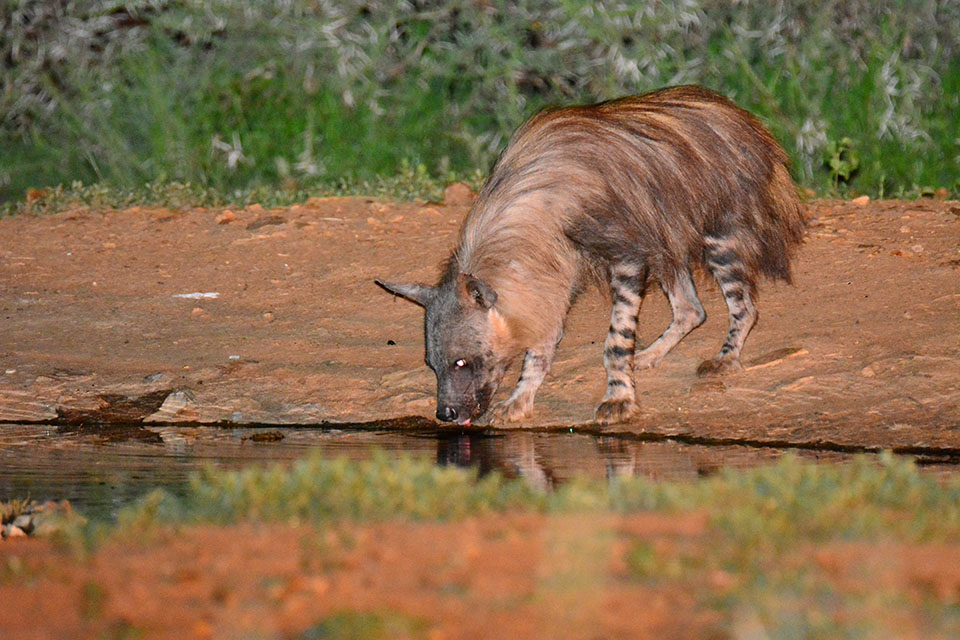 Nikon D7100 with Tamron 150-600mm lens @ 500mm, Tripod. f/6.7, ISO 6400, 1/60 sec - Nikon SB900 flash with Better-beamer
Nikon D7100 with Tamron 150-600mm lens @ 500mm, Tripod. f/6.7, ISO 6400, 1/60 sec - Nikon SB900 flash with Better-beamerWe had only one tripod setup so there is no comparative image of the leopard but this image confirms the good IQ of the Nikon D7100 and Tamron 150-600mm lens combo.
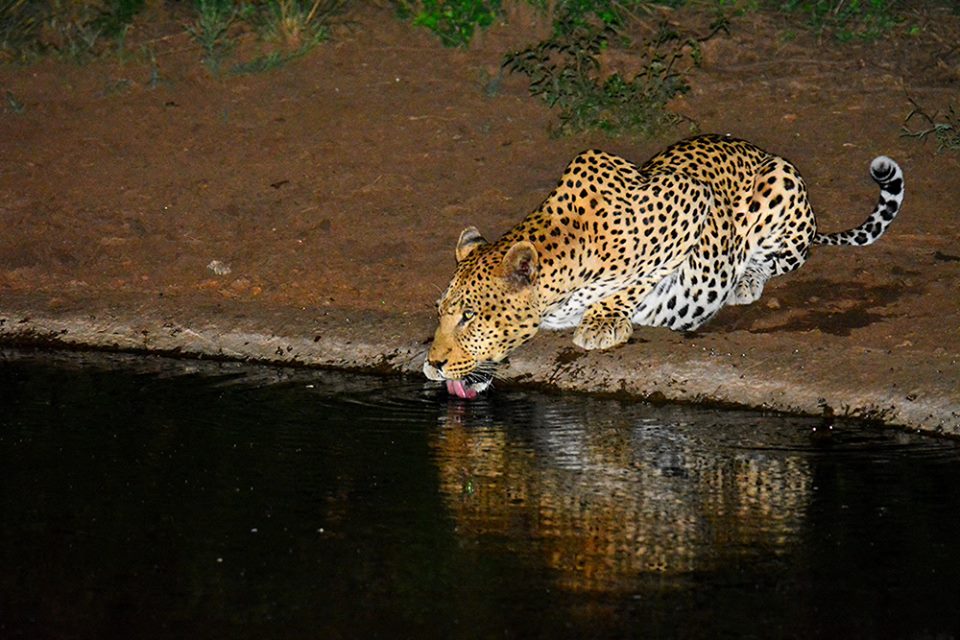 Nikon D7100 with Tamron 150-600mm lens @ 460mm, Tripod. f/6.3, ISO 6400, 1/60 sec - Nikon SB900 flash with Better-beamer
Nikon D7100 with Tamron 150-600mm lens @ 460mm, Tripod. f/6.3, ISO 6400, 1/60 sec - Nikon SB900 flash with Better-beamerBoth lenses perform well at night with flash.
Swapping Bodies & Lenses
Here we swapped bodies on the two lenses and added a third body, the Nikon D800:
Sigma 150-600 on 3 Bodies...
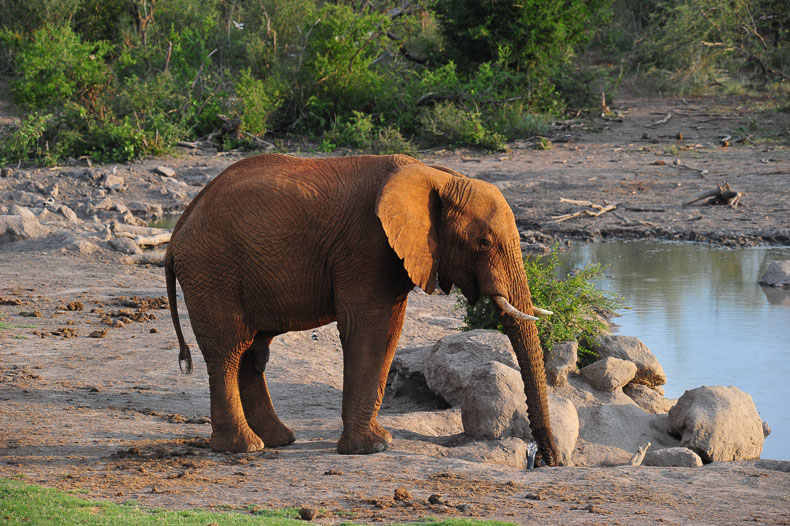 Nikon D3S with Sigma 150-600mm lens @ 250mm, Tripod. f/8, ISO 1100, 1/500 sec, -0.7ev.
Nikon D3S with Sigma 150-600mm lens @ 250mm, Tripod. f/8, ISO 1100, 1/500 sec, -0.7ev.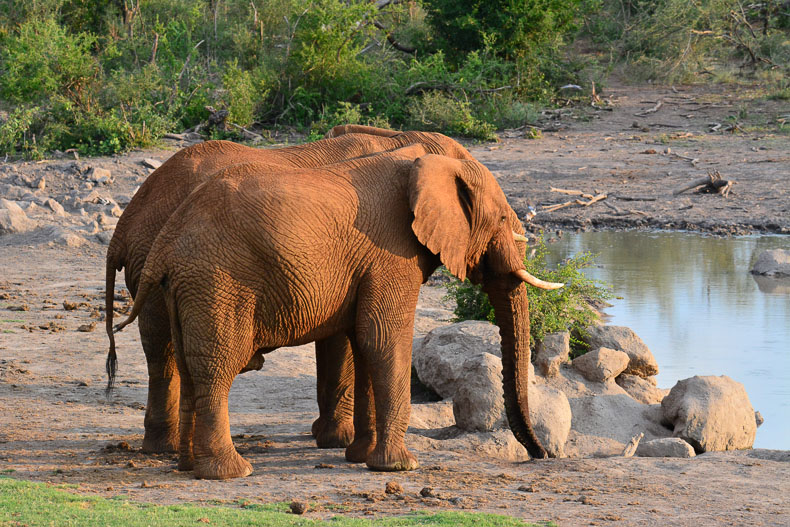 Nikon D7100 with Sigma 150-600mm lens @ 170mm, Tripod. f/8, ISO 1100, 1/750 sec
Nikon D7100 with Sigma 150-600mm lens @ 170mm, Tripod. f/8, ISO 1100, 1/750 sec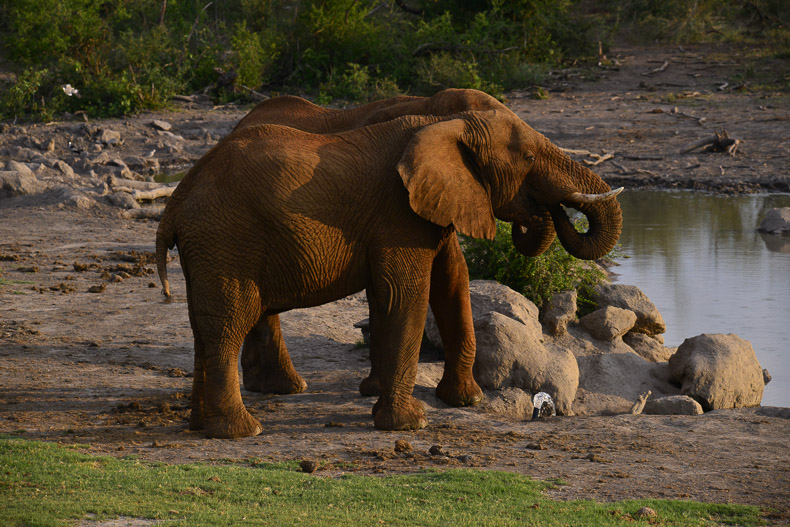 Nikon D800 with Sigma 150-600mm lens @ 250mm, Tripod. f/8, ISO 1000, 1/500 sec, -0.5ev.
Nikon D800 with Sigma 150-600mm lens @ 250mm, Tripod. f/8, ISO 1000, 1/500 sec, -0.5ev.Tamron 150-600 on 3 Bodies...
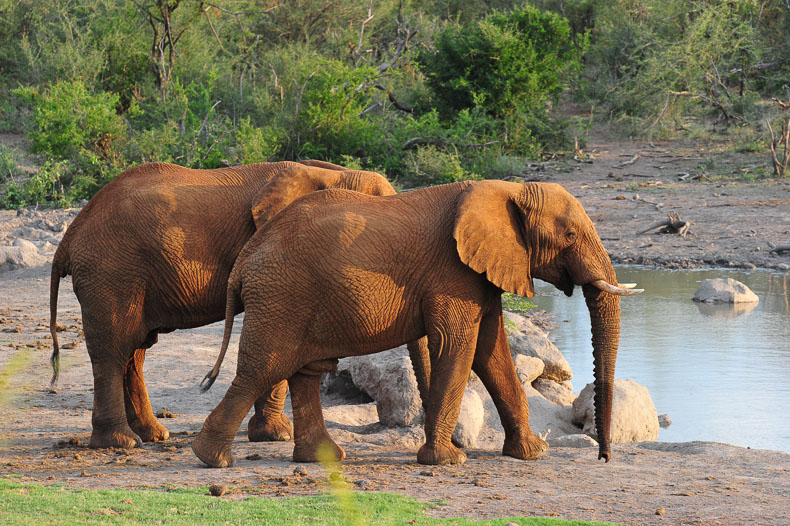 Nikon D3S with Tamron 150-600mm lens @ 240mm, Tripod. f/8, ISO 1100, 1/640 sec, -0.7ev.
Nikon D3S with Tamron 150-600mm lens @ 240mm, Tripod. f/8, ISO 1100, 1/640 sec, -0.7ev.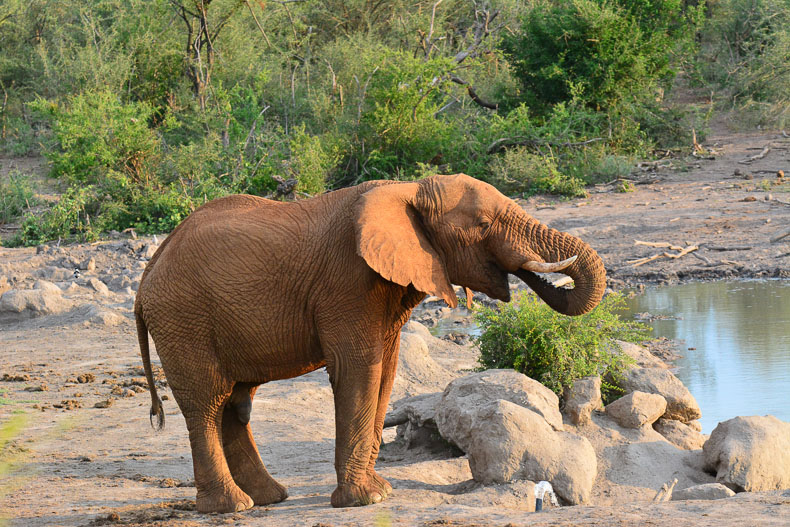 Nikon D7100 with Tamron 150-600mm lens @ 180mm, Tripod. f/8, ISO 1100, 1/750 sec
Nikon D7100 with Tamron 150-600mm lens @ 180mm, Tripod. f/8, ISO 1100, 1/750 sec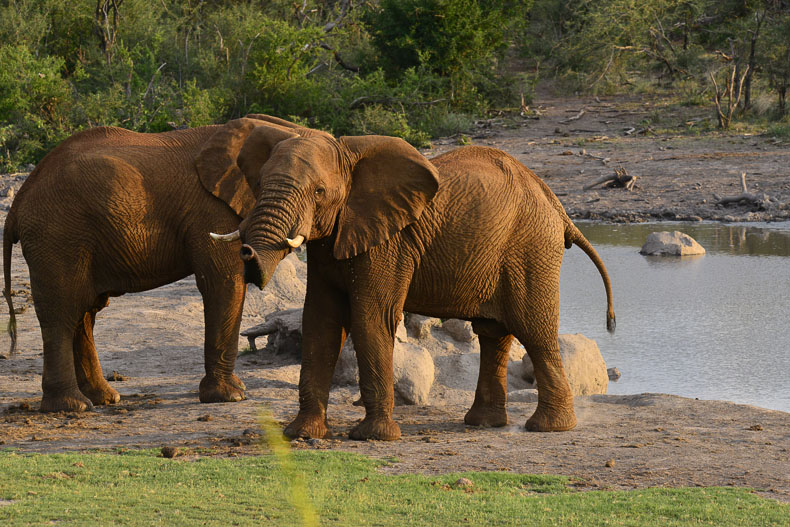 Nikon D800 with Tamron 150-600mm lens @ 240mm, Tripod. f/8, ISO 1000, 1/1000 sec, -0.5ev.
Nikon D800 with Tamron 150-600mm lens @ 240mm, Tripod. f/8, ISO 1000, 1/1000 sec, -0.5ev.Sigma 150-600 Contemporary Lens
For those of you wondering how does the Sigma 150-600mm Contemporary lens stack up against the Sigma Sport and the Tamron, here are three images to comapre. We were in the Pilanesberg National Park with our friend Shawn Catterall, and she had just bought the Sigma Contemporary that she uses with her Canon EOS 70D.
These are crops of the original images that were captured while we were all sitting on the same game-viewing vehicle shooting the leopard sitting in the shade. We all spot-metered due to the strong back-light and subject being in shade.
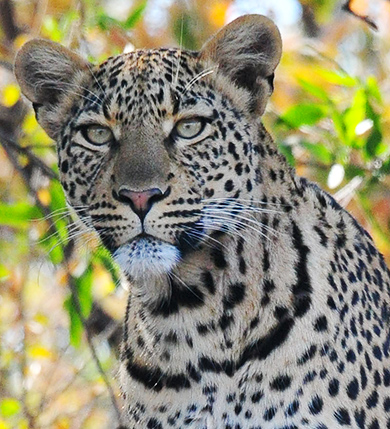 Nikon D3S with Sigma 150-600mm Sport lens @ 370mm, Handheld. f/8, ISO 4500, 1/1600 sec Nikon D3S with Sigma 150-600mm Sport lens @ 370mm, Handheld. f/8, ISO 4500, 1/1600 sec |
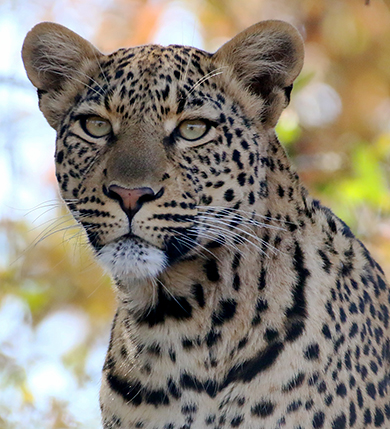 Canon eos 70D with Sigma 150-600mm Contemporary lens @ 600mm, Handheld. f/6.3, ISO 3200, 1/2000 sec Canon eos 70D with Sigma 150-600mm Contemporary lens @ 600mm, Handheld. f/6.3, ISO 3200, 1/2000 sec |
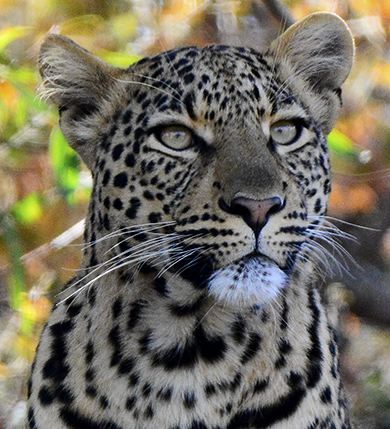 Nikon D7100 with Tamron 150-600mm lens @ 350mm, Handheld. f/8, ISO 2200, 1/1000 sec
Nikon D7100 with Tamron 150-600mm lens @ 350mm, Handheld. f/8, ISO 2200, 1/1000 secIf you're wondering why the ISO is so high on some of the images, keep in mind we are on a safari vehicle and even though it may have stopped, people on the vehicle could be moving plus we are hand-holding so we would rather have a sharp image with high ISO than a blurred image.
You can see more of Shawn's images captured with the Sigma Contemporary lens on her Facebook page or the lodge that she manages, called Tshukudu.
Nikon 200-500mm zoom lens
And for those of you wondering how the Nikon 200-500mm zoom lens stacks up against the Sigma and Tamron lenses, this review by PhotographyLife rates the Tamron and Sigma C (Contemporary) lenses higher than the Nikon for wildlife photography.
The Sigma Sport is a sharper lens than the Sigma C so it would rate even higher against the Nikon 200-500 lens.
Sigma 60-600 Sport Lens
The new Sigma 60-600 Sport Lens is pitted against the Sigma 150-600 by Jared Polin, who hints that it could be the best wildlife / Sports lens for $2,000...?
Return from Tamron vs Sigma 150-600 to Tamron 150-600 Lens page
Return from Tamron vs Sigma 150-600 to Sigma 150-600 Lens page
To make a safari rental booking in South Africa, Botswana or Namibia click here
"It's 768 pages of the most amazing information. It consists of, well, everything really. Photography info...area info...hidden roads..special places....what they have seen almost road by road. Where to stay just outside the Park...camp information. It takes quite a lot to impress me but I really feel that this book, which was 7 years in the making, is exceptional." - Janey Coetzee, founder of CAROK (Camps and Roads of Kruger) South Africa
"Having a passion for the region itself and having to know about all dynamics, water holes and ideal roads for a period of 6 years - I wish I had this guide on my first trip already!" - Morkel Erasmus, Secunda, South Africa
"Mario and Jenny take you to places that are not always visited, and their descriptions of the more remote camps will allow you to make an informed decision without wasting time and money" - Bob & Sherry Shepardson, DeBary, Florida, USA
"Your time and money are valuable and the information in this book will help you save both." - Don Stilton, Florida, USA
"I highly recommend the book to anyone visiting Etosha National Park to photograph the animals - or anyone considering an African photography safari in the future." - Anne Darling, Cognac, France
"As a photographer and someone who has visited and taken photographs in the Pilanesberg National Park, I can safely say that with the knowledge gained from this eBook, your experiences and photographs will be much more memorable." - Alastair Stewart, BC, Canada
"This work is so much more than an eBook, because it is also a guide, a tutorial, an inspiration and a must-have for anyone interested in wildlife photography" - Findtripinfo.com, USA
Photo Safaris on a Private Vehicle - just You, the guide & the animals!



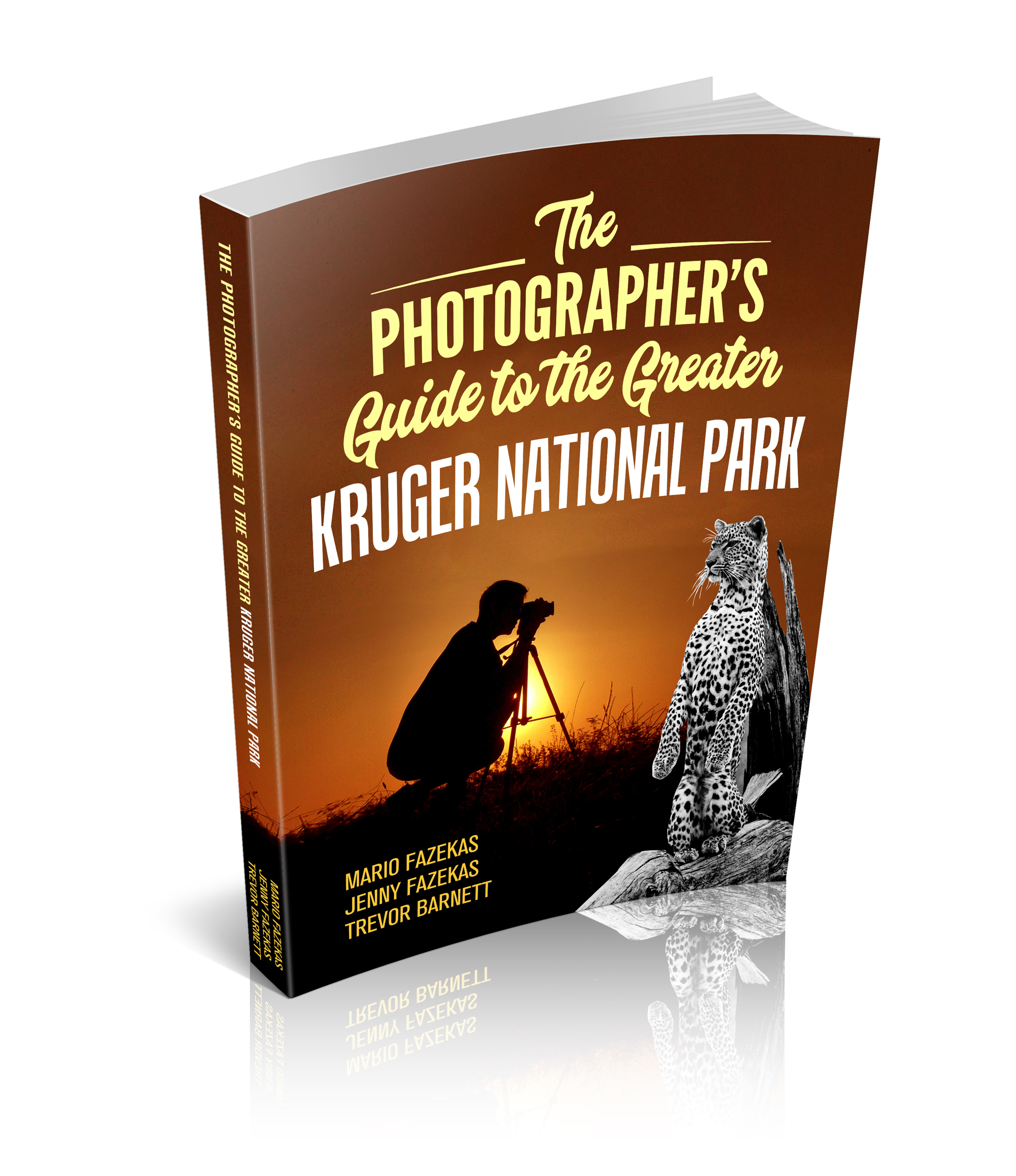






New! Comments
Have your say about what you just read! Please leave us a comment in the box below.